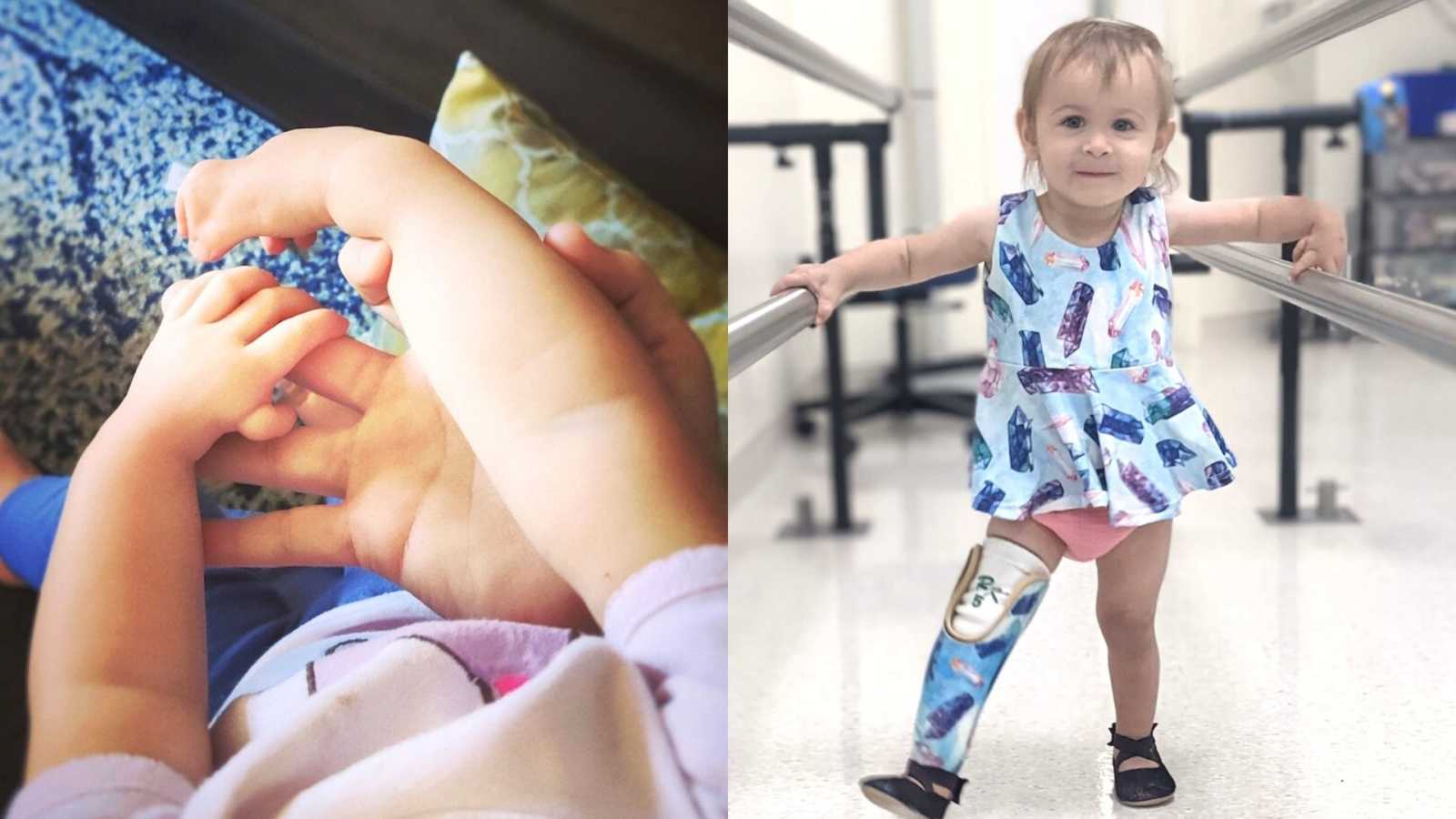“On Christmas Eve of 2018, my husband Brian and I got the most beautifully terrifying surprise. Despite our decision to stop at two kids, number three was on their way. It was nerve-wracking at first but very quickly we became enamored and excited for this tiny baby who was going to complete our family. Our beautiful surprise. What we could never have guessed is just how much of a surprise she would be, and how much she would change our lives and the lives around us.
My two previous pregnancies were filled with a lot of difficulties. With my first, I had hyperemesis gravidarum, which is effectively severe morning sickness that never goes away. With my second pregnancy, I was spared this misery but ended up with insulin-resistant gestational diabetes.
So it is safe to say that when my pregnancy with our third child was completely uneventful, I was in heaven. I would frequently joke I was waiting for the other shoe to drop because this was too easy to be true. On April 18, 2019, at my 20-week anatomy scan, we got the most life-altering news. Our baby wasn’t growing as she should. Her left arm seemed to curve in and her right leg was drastically shorter and underdeveloped. She also appeared to have a single umbilical artery that could lead to delayed growth and would make delivery dangerous. This news was dropped in my lap as I sat alone in the OB’s office.
Brian normally came to these scans, but he was at home excitedly preparing for our cruise to celebrate my 30th birthday. We were leaving in the morning. When I told him everything the OB found, we were both scared because we had no idea what this would mean for her. Would she be okay? When we returned from the trip, we booked our appointments with the high-risk OB and would get bi-weekly scans. Eventually, they were able to determine her heart was perfect but her left tibial bone had stopped growing at 15 weeks gestation, which caused her foot to club. Her right radius was also on its very own and very slow growth curve. From what we could see at the time, everything else looked perfect. But there are some things you can’t see on a sonogram.
At one day shy of 37 weeks, I was in labor. I had an emergency C-section because her heart rate was already dropping with every contraction and, on August 12th, 2019, at 11:40 p.m., Delilah made her grand and very exciting entrance into the world.
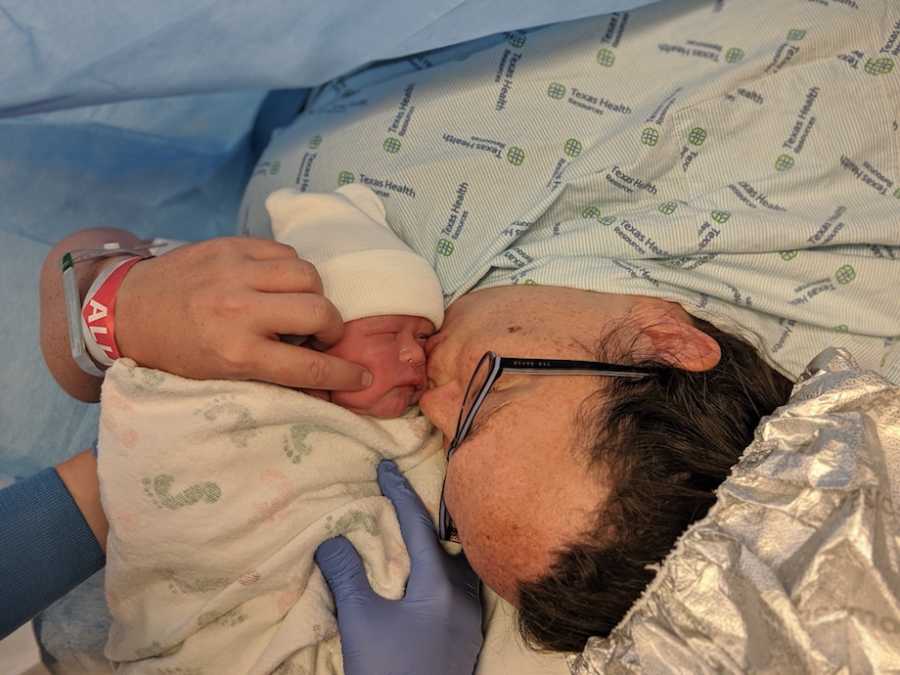
When they looked her over, they noticed she had a lot more going on than just her leg and her arm. Both her hands had differences as well but the most pressing and scariest thing was when they discovered she had something called imperforate anus. There are variations of this disorder but for her, this meant her anus did not exist. She was rushed to the NICU where she had to have a special tube put down her throat and into her stomach because anything that was in there, including bile, would have to remain drained. She was placed on IV nutrition and hooked up to so many wires. The following day she was rushed to surgery to place a colostomy.

This would be the first of countless surgeries for her. By the time we left the NICU at 1-month-old, she had undergone two emergency surgeries, countless X-rays, stalled growth, and six diagnoses that fall under one very rare and very diverse umbrella, called VACTERL Association. As she has grown we have added a few more diagnoses to her ever-growing list. She has imperforate anus and persistent cloaca. When you are still forming in utero, all of your lower systems, urethra, rectum, and in girls, vagina, all connect. At some point, they are supposed to separate, but for girls with a cloaca, they don’t. For Delilah, it meant she had no anus, no vaginal opening, and all three connected into one long common channel that wanted to empty through her urethral opening.
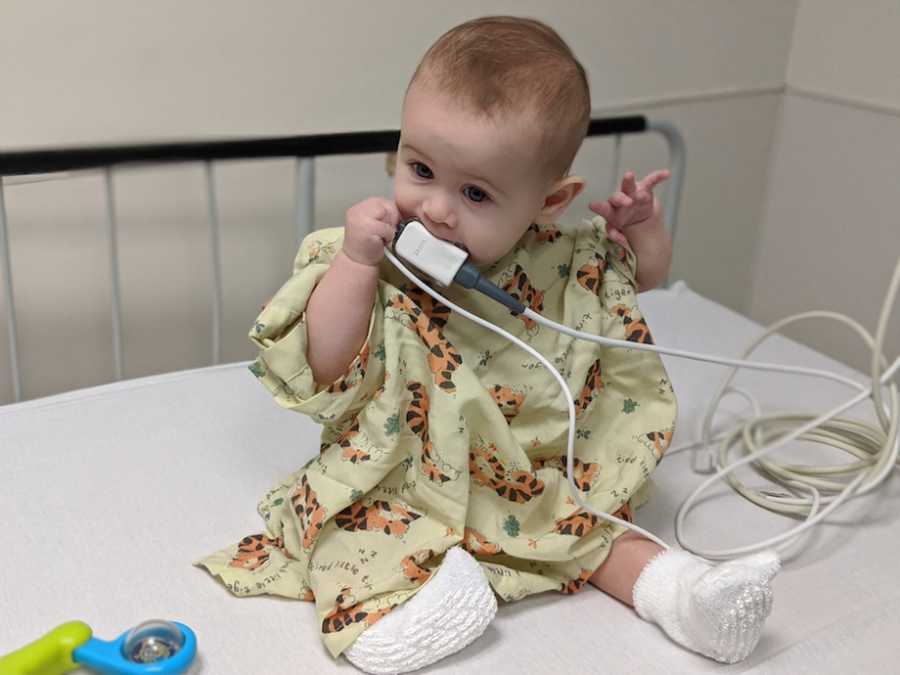
She has a neurogenic bladder, which is common with cloaca and means her bladder muscles don’t really work. We cath her twice a day and she uses her abdominal muscles to push out urine. We have to watch her kidneys closely because if her bladder gets too full, it could back up into her kidneys. She also has near-constant UTIs. What we saw on the first sonogram is tibial hemimelia. There are a few variations, but for Delilah, this means her tibia is connected to her knee but stopped growing, so she now has a tibial nub. It didn’t connect to her ankle which caused her foot to club completely upward. Her fibula also isn’t connected to her knee and just floats off to the side.
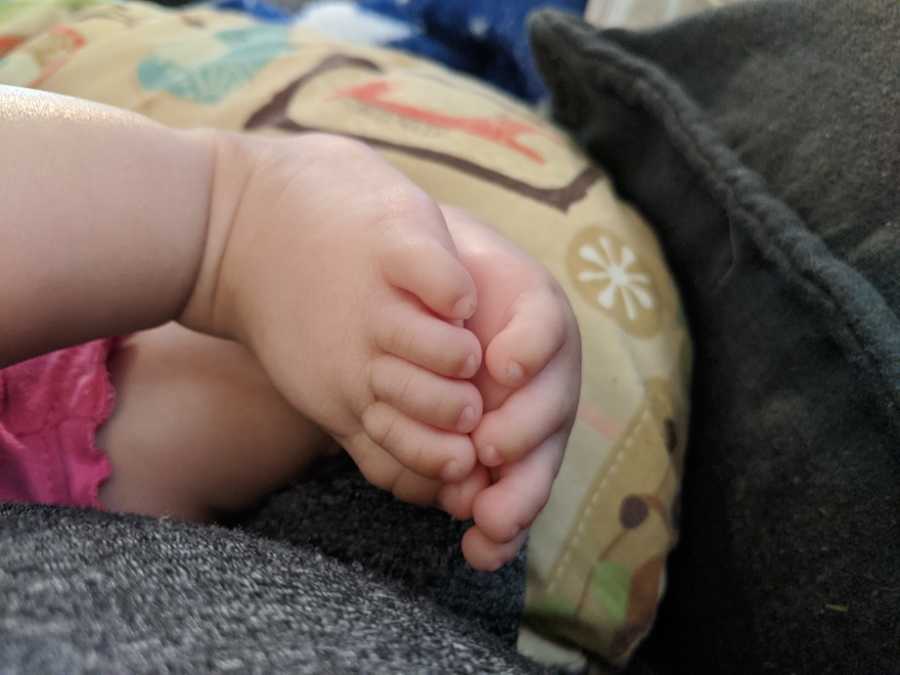
Caudal regression syndrome is when the spinal cord stops short of where it is supposed to. It usually tapers off into a cylinder shape, but Delilah’s is completely flat and stops too soon. Radial dysplasia, radial clubbed hand, and hypoplastic thumb all work together. Her radius is too short which causes her hand to club inward. Her thumb was present but missing almost all of its bones, so it wasn’t at all functional. Polysyndactyly thumb duplication is a fancy way of saying she had three thumbs that all stuck together. Her index finger actually grew into the thumb position, forked off to create two finger-ends, and fused to her thumb. She also has microcephaly, though hers is on the mild side. None of these are genetic. Only a handful are ever seen together. She is literally the only person in the world like her.
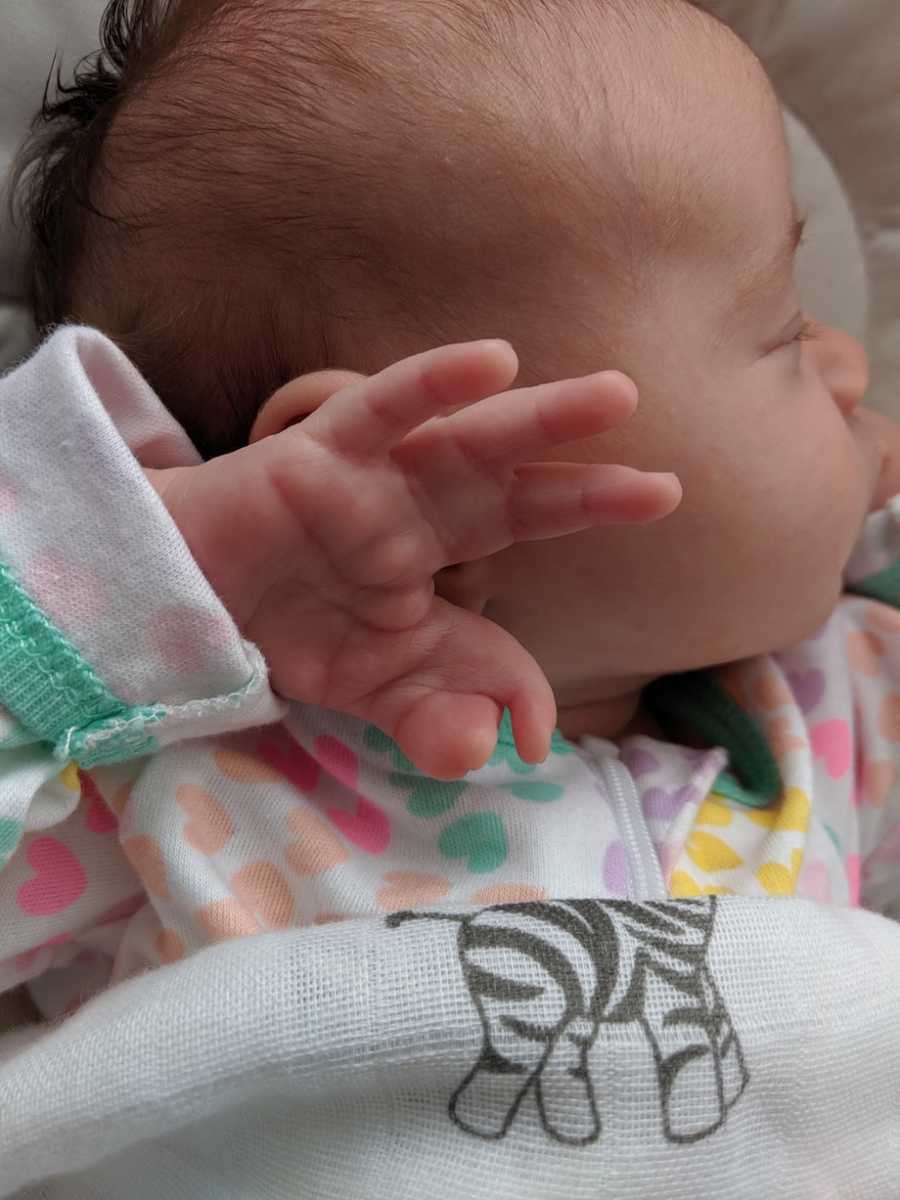
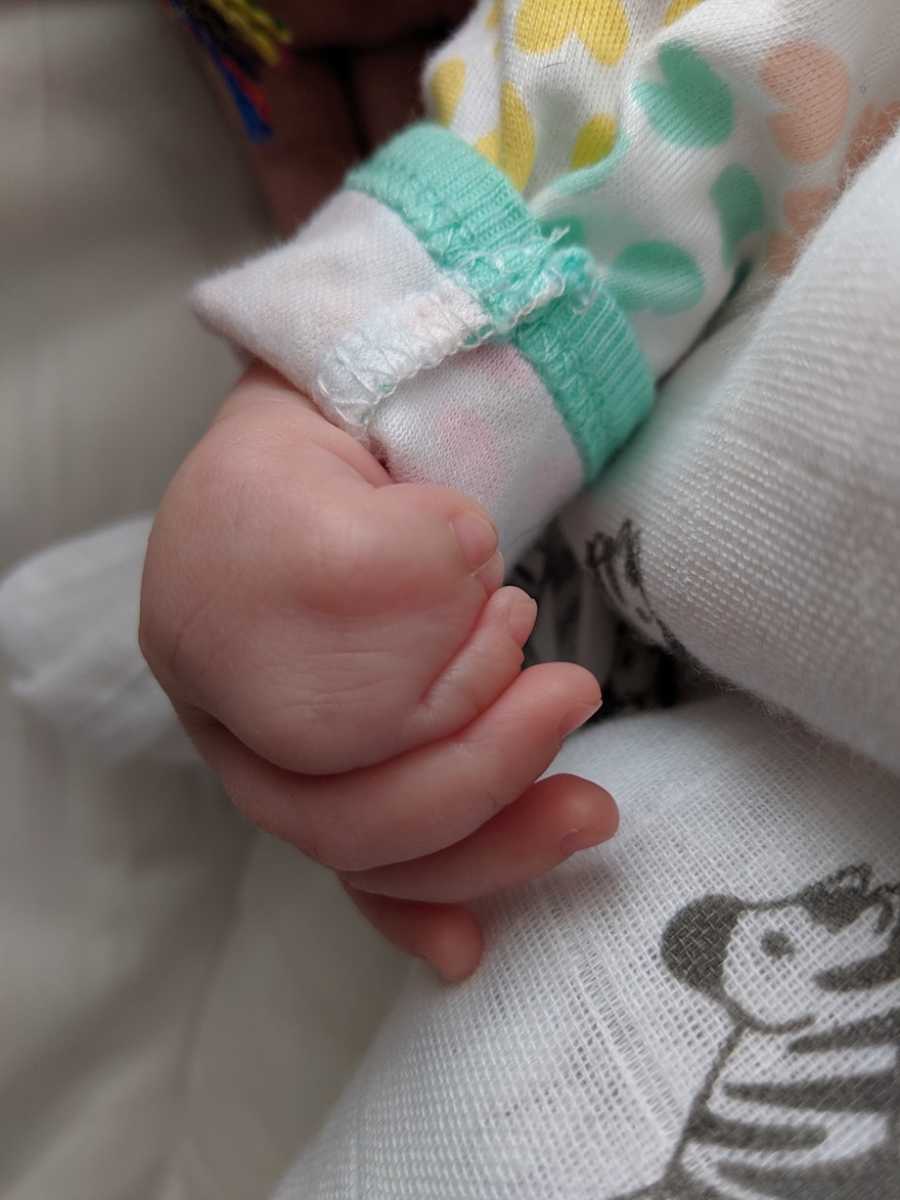
Delilah will turn 2 in August and, to date, has undergone 12 surgeries, including some major anorectal and urogenital reconstructions. She no longer has a colostomy and we actually celebrate her Poop-iversary for her very first poop through her custom-made anus, or as I like to call it, her Gucci Booty. She had her foot amputated to give her the ability to walk on two feet and her hands have now both been reconstructed. She has on each hand, three perfect fingers and one perfect thumb. I hear others say, so frequently, how they ‘couldn’t do it.’ Having a special needs child, much less a very medically complex one, isn’t something anybody ever expects to do. But we do it because we have to because our child needs us to. If we didn’t ‘do it,’ she would die. No parent would ever let that happen.
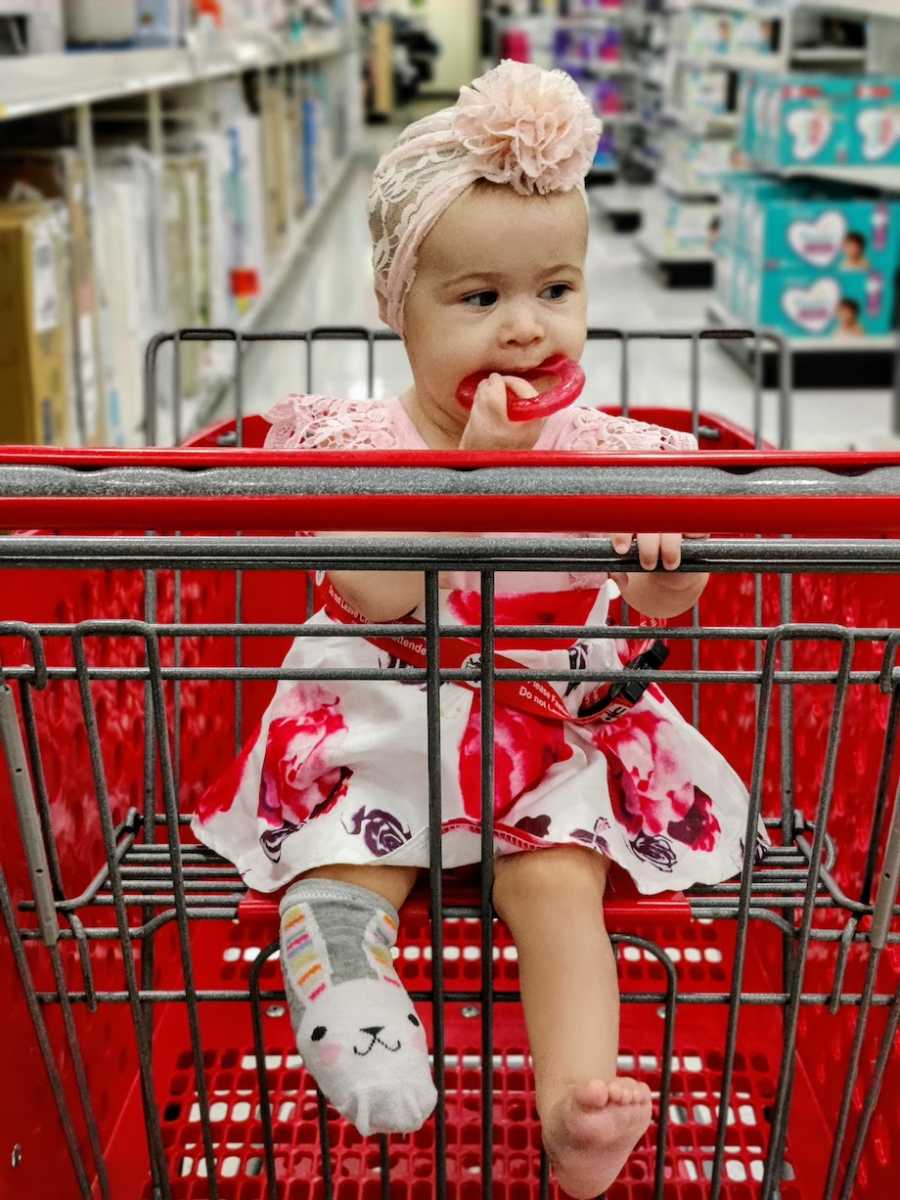
You don’t really think about it. You just act. You make the appointments, you go to the therapies, you get to the point when you have a favorite hospital and you always ‘know the drill.’ You get used to spewing off a million different medical terms like it’s nothing. You even get used to educating new doctors and nurses on some diagnoses because this is likely the first time they have ever seen it. You fly across the country at the very beginning and again at the peak of COVID to get your child the best surgeon and you wake up and do it all again. Because your child is just this, your child.
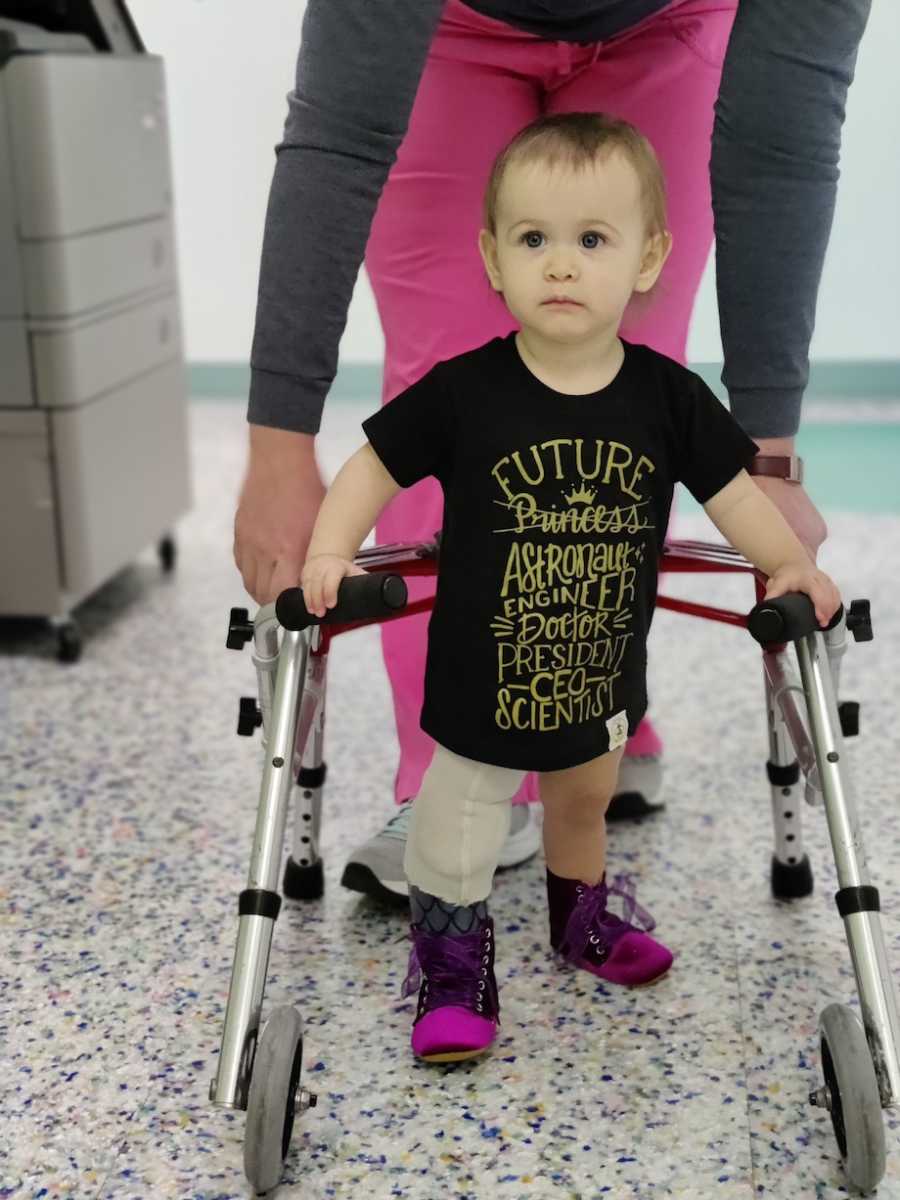
The thing is, even with everything mentioned above, she is a very typical toddler. As I write this, she is downstairs throwing a typical toddler tantrum caused by a typical toddler nap refusal. She has a handful of words and loves to color and play with our animals. She loves her siblings and hates being told no. She loves bathtime and hates when it is over. She is fast—whether she is trying to run in her prosthetic leg or knee walking because she is getting a leg break. The thing is though, what she isn’t is a ‘poor baby’ and nobody should be ‘sorry’ this has all happened. She isn’t broken and doesn’t need to be cured or fixed. She was born like this and it is okay!

Nothing she has or is should be treated any differently. She will struggle with some things. She will also excel at so many more. She looks different. So what? Who doesn’t? We literally all look different. Even identical twins have their differences. None of it matters. We are all born perfect. I have always been passionate about equality for those with special needs or differences. My older brother had a brain tumor when he was very young. His surgery left him mentally delayed. This delay didn’t matter then and it doesn’t now. While, sadly, he did pass when I was a teen, he taught me invaluable lessons I never expected to utilize for my own child. Who could expect this?
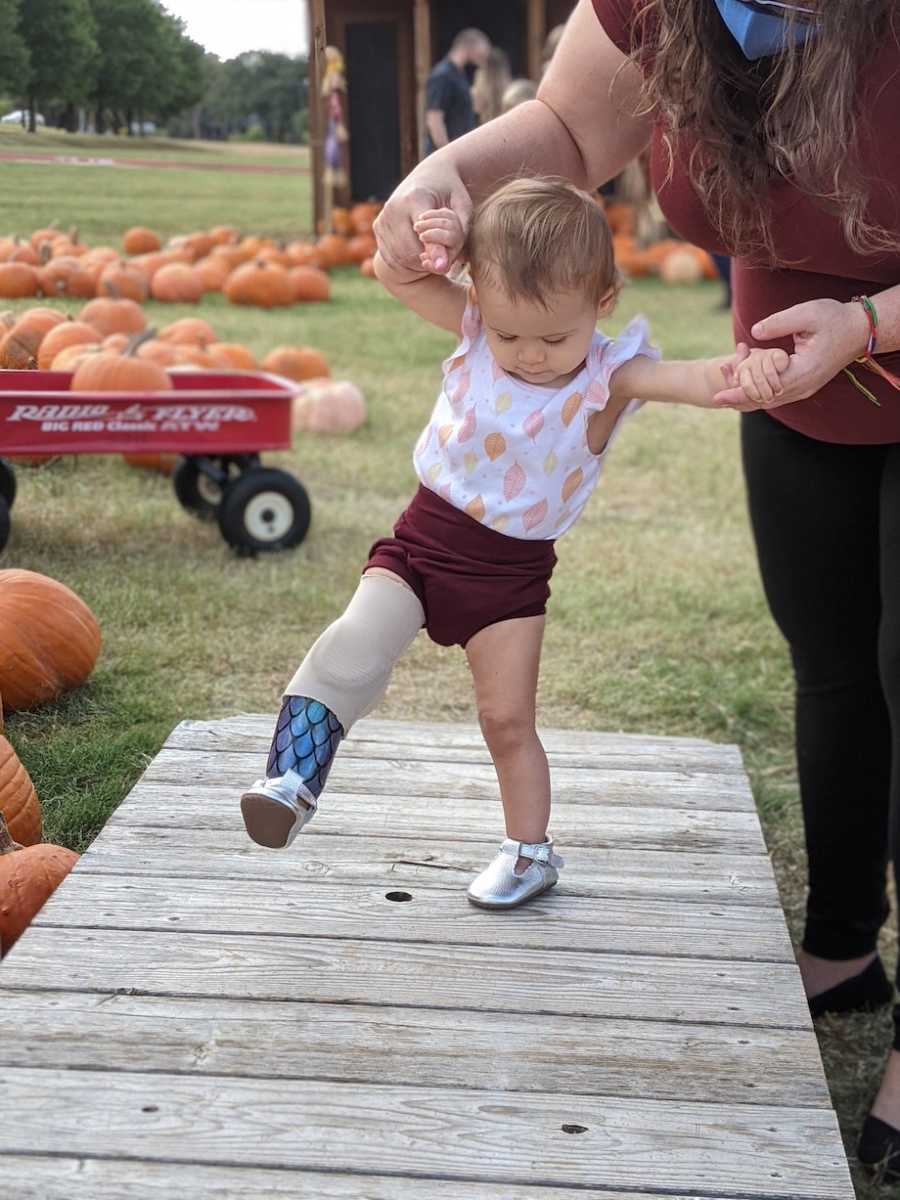
But armed with knowledge from growing up with a special needs brother, watching his struggles and strides, watching my parents navigate a life they never expected, and now with my own child with special needs, a fire is lit in my belly to normalize and educate. I am determined to help my child to grow up in a world where people don’t feel the desire to point her out to others as if she is something marvel to look at. A world where she can stop being defined by what she looks like because we have realized whether she has four fingers on a hand or no hand at all, she is just like everyone else. I look forward to the day when Delilah is ‘boring.’
Yes. I want my child to be boring. I want people to see past her differences because they are just a part of a person and not something that matters at all. Representation of those who look, move, or function differently is vital until those people are no longer seen as different. Because really, being different IS normal.”
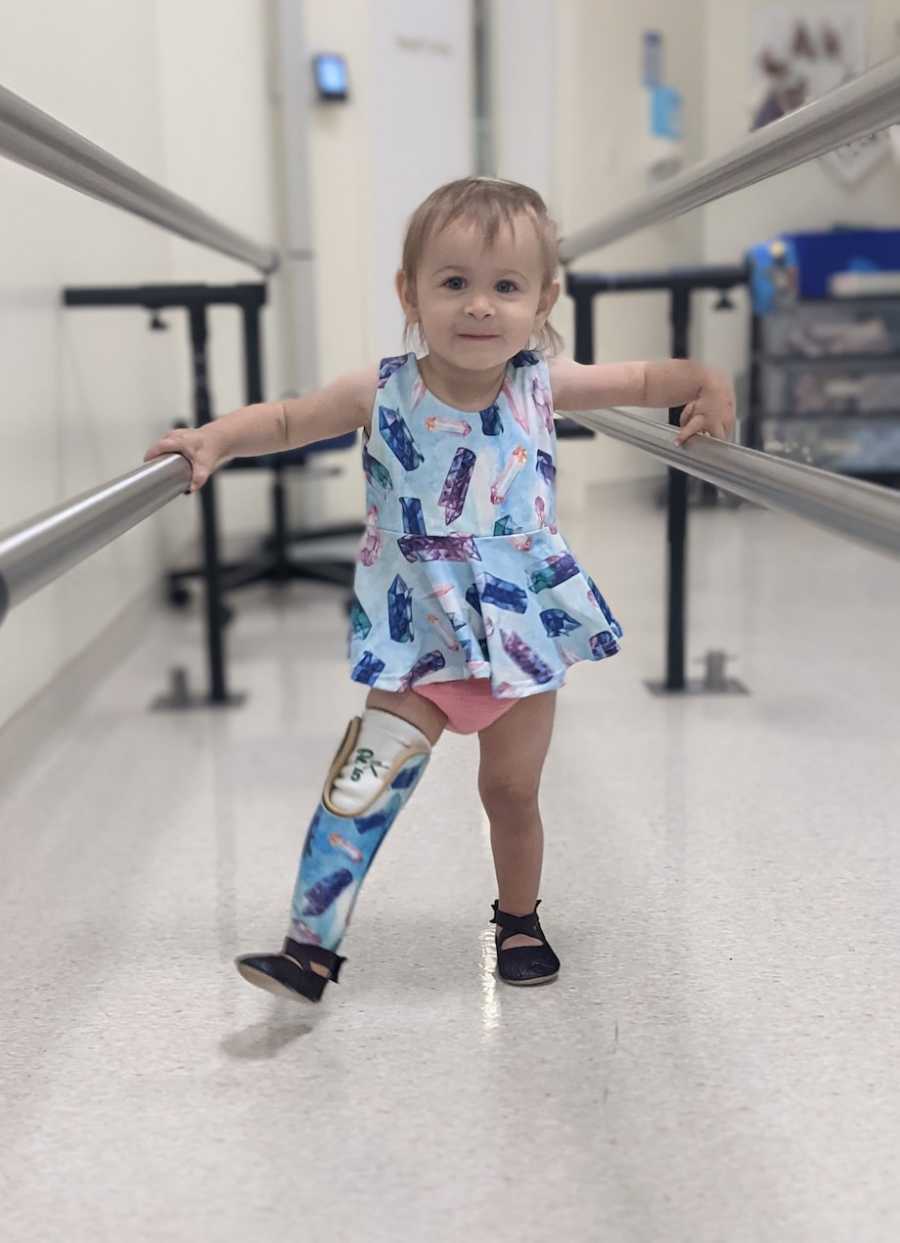
This story was submitted to Love What Matters by Kristen Shef of Grand Prairie, Texas. You can follow their journey on Instagram and Facebook. Submit your own story here, and be sure to subscribe to our free email newsletter for our best stories, and YouTube for our best videos.
Read more stories like this:
SHARE this story on Facebook to help celebrate unique and beautiful differences!

